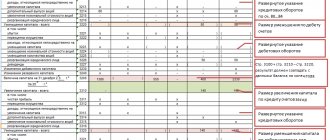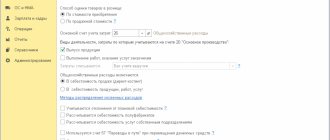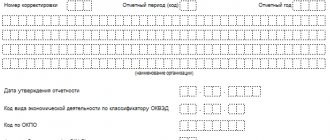Who is obliged to attach explanations to the financial statements?
An explanatory note is required as part of the annual reporting of all organizations that maintain full accounting records.
An exception is organizations entitled to simplified accounting:
- small businesses;
- non-profit organizations;
- participants of the Skolkovo project.
Such entities have the right to report on a reduced set of accounting forms and are not required to provide explanations, or provide them only in relation to the most important information, without which it is impossible to assess the financial condition of the company.
How to compose it
General recommendations on how to correctly write an explanatory note as a response to a requirement:
- Please provide the request number and date.
- Provide a breakdown or justification of the amounts about which the tax authorities have questions.
- If you discover that there is an error in your return, you should submit an amended return instead of responding to the request.
- When sending clarifications, please indicate the surname and initials of the employee who wrote the order. This will speed up the processing of your response.
- The document should be sent as a scan with signatures and a seal, or the response should be signed with a qualified electronic signature.
If you receive a VAT request, a formalized response must be drawn up and attached to the message from the Federal Tax Service. In the Kontur.Extern system, the form of this answer looks like this:
Sample
There is no unified form of explanatory note. The message should be drawn up based on the information required by the tax authorities. Most often the letter is written in free form.
An example of a letter to the tax office about providing clarifications on the tax burden:
Often the accountant will write a note, which is a cover letter accompanying the list of documents requested.
In some cases, the tax authority requires an explanation of the reasons for the loss or discrepancy in the tax base in different reports (for example, in the DAM and the 6-NDFL declaration). For this purpose, a letter is drawn up in any form with explanations.
What data is included in the notes to the financial statements in 2021
The explanatory note must reflect information about the accounting policies, because its provisions establish the accounting rules for the enterprise. Additional data not included in the main reports helps assess the financial condition of the entity and the reasons for the current situation as of a specific date.
PBU 4/99 determines the content of the notes to the balance sheet and financial statements:
- data at the beginning and end of the year, as well as the movement of intangible assets, fixed assets, accounts receivable and payable, financial investments and capital;
- composition of income and expenses;
- composition of reserves;
- extraordinary facts of economic life and their consequences;
- conditional facts of economic life, events after the reporting date, etc.
Accounting 2
You can study this section only if you have a sample balance sheet in front of you.
It is located in Appendix No. 1. Prepare it for work, if you have not already done so, and place it in front of you. Look at the balance. As you can see, the assets and liabilities of the enterprise are displayed on the balance sheet on different halves: left and right.
This is done to ensure that the organization’s property and debts do not accidentally mix. Property should be in assets, debts - in liabilities. It cannot be otherwise.
On the left half of the balance sheet, the accountant records the value of all assets that the company has.
On the right half of the balance sheet, the accountant records the value of all liabilities that the company has.
However, if an accountant begins to list in the balance sheet all the assets and liabilities of the enterprise, then instead of a two-page report, you will have to send a thick book to the tax office.
For this reason, a long time ago, accountants divided all the assets and liabilities of an enterprise into several groups and called these groups balance sheet items .
Each item was given its own name and a separate line was allocated for it in the balance sheet. All balance sheet items look like special shelves on which the accountant lays out all assets and liabilities.
For example, on the shelf called CASH we will place the money that is stored in the company’s cash register, and that which is in the bank account, and all the other money that the company has. Find this article in the sample.
Please note: the balance sheet may contain items with the same names. For example, in assets we have two lines FINANCIAL INVESTMENTS. Find them in your balance sheet.
This is not a repetition or an error. The fact is that financial investments are divided into two types: those that will return to us no earlier than in a year (non-current assets), and those that will return to us within a year (current assets). You will learn to understand such similar balance sheet items gradually during the learning process. There are no difficulties here. In the meantime, let's continue our acquaintance with the structure of the balance sheet.
You have probably already noticed the leftmost column of the balance sheet, which is called “Explanations”. This column appeared in the balance sheet recently. Why is it needed?
The fact is that in addition to the balance sheet, the company also draws up other reporting documents that are designed to reveal in more detail the content of all balance sheet items. One of them is called “Explanations to the Balance Sheet” . Each explanation in this document is assigned a unique number. The accountant writes this number opposite the balance sheet item that the document “explains.”
Who is interested in explanations of financial statements?
Explanation of financial statement indicators is necessary for a fairly wide range of interested parties, including:
| Interested people | Cause |
| State control authorities (including the Federal Tax Service) | Explanation of the dynamics of indicators, transcript of articles |
| Owners | Explanation of financial result |
| Creditors | Assessing the readiness of the debtor organization to repay the debt |
| Investors | Assessing the stability of the organization and its investment attractiveness |
Individual points: content and main part
If we consider in more detail the individual points of the explanatory note, it should be said that its content should completely coincide with the content of the thesis. As for the main part, only the basic information and conclusions obtained are disclosed here. There is no need to describe the study.
Regarding the introduction, it is appropriate to explain why your choice fell on this particular topic. What's special about it and why are you interested in it? Don't forget to mention why the topic is relevant and valuable.
It would also be a good idea to mention the difficulties you encountered during the research. Tell us how you were able to cope with them and what helped you with this.
To correctly draw up an explanatory note, you must first develop a plan.
By the way! For our readers there is now a 10% discount on
What form is used to prepare an explanatory note for 2019?
Clause 4 of Order No. 66n of the Ministry of Finance of Russia dated 07/02/2010 provides for the provision of explanations in tabular or text form. These methods can be combined. The organization independently decides what data requires clarification, but must take into account the recommended forms from Appendix No. 3 to Order No. 66n.
The document is usually drawn up according to the following plan:
- Information about the organization: location; Kind of activity; information about managers, founders and affiliates, etc.
- Data on accounting policies: methods of evaluating products, inventories; methods of calculating depreciation, information about changes in accounting policies during the year, if any.
- Financial indicators for the reporting year: revenue and costs by type of activity; It is possible to decipher large income and expense transactions.
- Actually, explanations for individual balance sheet items.
The specifics of the company’s activities in each specific case determine which indicators should be excluded and which ones should be added.
What happens if you don’t provide an explanation to the Federal Tax Service?
If a request is received via TKS, and the receipt is not sent within six days, tax authorities have the right to block the current account (clause 2, clause 3, article 76 of the Tax Code of the Russian Federation).
For failure to submit or untimely submission of explanations and requested documents within the framework of counter checks, paragraph 6 of Art. 93.1 of the Tax Code of the Russian Federation establishes sanctions:
- 10,000 rub. for unsubmitted or late submitted documents;
- 5000 rub. for late reporting of information.
For violations in fulfilling the requirement within the framework of a desk or field audit of a taxpayer, a fine of 200 rubles is established. for each document not submitted (clause 4 of article 93 of the Tax Code of the Russian Federation).
Explanatory note to financial statements - sample in 2020
Explanations for the balance sheet can be formatted as follows:
| Explanations to the accounting (financial) statements LLC "Bread Factory No. 3" for 2021 1. General information Limited Liability Company (LLC) "Bread Factory No. 3" was registered by the Federal Tax Service No. 18 for Moscow on September 02, 2012, OGRN 1117711111111, INN 7711123456, KPP 771101001; legal address: Moscow, st. Lenina, house 155. 1.1. Authorized capital: 1,800,000 (one million eight hundred thousand) rubles (fully paid). 1.2. Founders and affiliates of the organization:
1.3. The main activity of the organization according to OKVED: 10.71.1 - Production of bread and non-durable bakery products. 1.4. The number of employees as of December 31, 2021 is 77 people. 1.5. There are no branches, representative offices or other separate divisions. 2. Basic accounting policies The accounting policy of LLC Bread Factory No. 3 was approved by order of the General Director O.N. Saushkin. dated December 28, 2018 No. 162. 2.1. A non-linear depreciation method is used. There is no revaluation of fixed assets. 2.2. The financial result from the sale of products and goods is determined by shipment. 2.3. Inventory and finished products are assessed at actual cost. 2.4. The write-off of inventories into production is carried out at an average cost. 3. Financial indicators The general meeting of founders on February 17, 2020 approved the financial statements for 2021. The accounting (financial) statements of Bread Factory No. 3 LLC for 2021 were generated based on the accounting and reporting rules in force in the Russian Federation. 3.1. Net profit at the end of 2021 amounted to RUB 5,841,600. Payment of dividends to the founders in accordance with their shares in the authorized capital was made on 02/20/2020. 3.2. Revenue for 2021, rubles:
3.3. Costs of production and sales of products in 2021, rubles:
4. Explanation of balance sheet items as of December 31, 2019 4.1. Fixed assets: Name | As of 12/31/2018 | Change | As of 12/31/2019 | ||||
| Initial cost | Depreciation | Received | Dropped out | Accrued depreciation | Initial cost | Depreciation | |
| Fixed assets of all, including: | 1 300 300 | 1 001100 | 2 192 100 | 45 200 | 341 100 | 3 447 200 | 1 342 200 |
| Building | 900 100 | 800 800 | 1 200 600 | — | 200 300 | 2 100 700 | 1 001 100 |
| Equipment | 400 200 | 200 300 | 90900 | 45 200 | 90700 | 445 900 | 291 000 |
| Vehicles | — | — | 900 600 | — | 50 100 | 900 600 | 50 100 |
4.2. MPZ
| Name | As of 12/31/2018 | Change | As of 12/31/2019 | |
| Cost price | Received | Dropped out | Cost price | |
| MPZ total, including: | 846200 | 79600 800 | 79 806 500 | 640500 |
| Raw materials | 820 400 | 36 500 100 | 36 680 000 | 640 500 |
| Finished products | 25 800 | 43 100 700 | 43 126 500 | — |
4.3. Accounts receivable
| View | As of 12/31/2018 | Change | As of 12/31/2019 | |||||
| Accounted for under the terms of the contract | Reserve | Admission | Disposal | Accounted for under the terms of the contract | Reserve | |||
| Redeemed | Written off | Reserve restored | ||||||
| Accounts receivable total, incl. | 18 100 500 | — | 76 701 700 | 68 601 100 | 27 700 | — | 26 173 400 | — |
| according to payments to suppliers | 2900 300 | — | 1 500 400 | 2 300 600 | 1 300 | — | 2 098 800 | — |
| according to settlements with buyers | 15200 200 | — | 75 201300 | 66 300 500 | 26 400 | — | 24 074 600 | — |
4.4. Accounts payable
| View | As of 12/31/2018 | Change | As of 12/31/2019 | |||||
| Accounted for under the terms of the contract | Reserve | Admission | Disposal | Accounted for under the terms of the contract | Reserve | |||
| Redeemed | Written off | Reserve restored | ||||||
| Accounts payable total, incl. | 33 547 400 | — | 47 900 300 | 49 800 600 | 45 900 | — | 31 601 200 | — |
| Short-term total, including: | 23 600 700 | — | 47 900 300 | 46 200 400 | — | — | 25 300 600 | — |
| according to payments to suppliers | 22 100 500 | — | 38 300 100 | 36 500 100 | — | — | 23 900 500 | — |
| according to budget calculations | 1 500 200 | — | 9 600 200 | 9 700 300 | — | — | 1 400 100 | — |
| Long-term total, including: | 9 946 700 | — | — | 3 600 200 | 45 900 | — | 6 300 600 | — |
| according to payments to suppliers | 45 900 | — | — | — | 45 900 | — | — | — |
| on credits, loans | 9 900 800 | — | — | 3 600 200 | — | — | 6 300 600 | — |
4.5. Salary
There are no payables and receivables for wages as of December 31, 2019.
The average number of employees as of December 31, 2019 is 77 people.
General Director of LLC "Bread Factory No. 3" Saushkin O.N. Saushkin
22.02.2020







